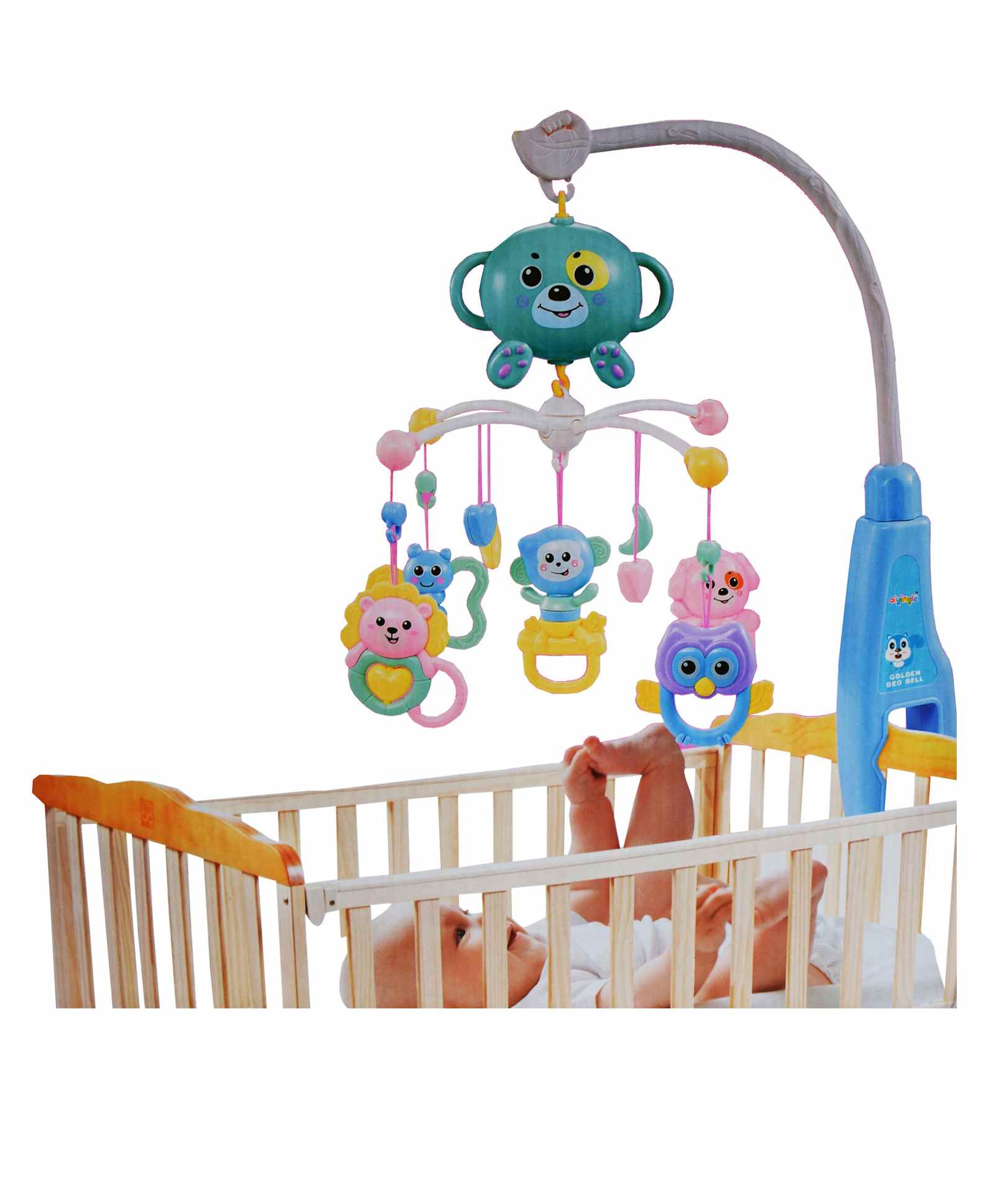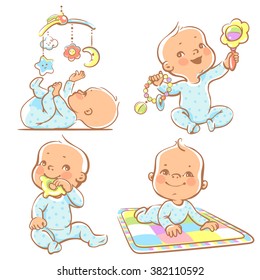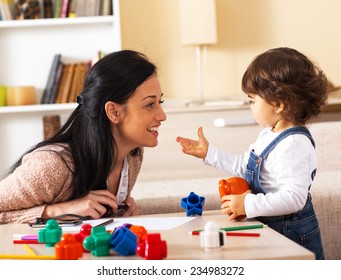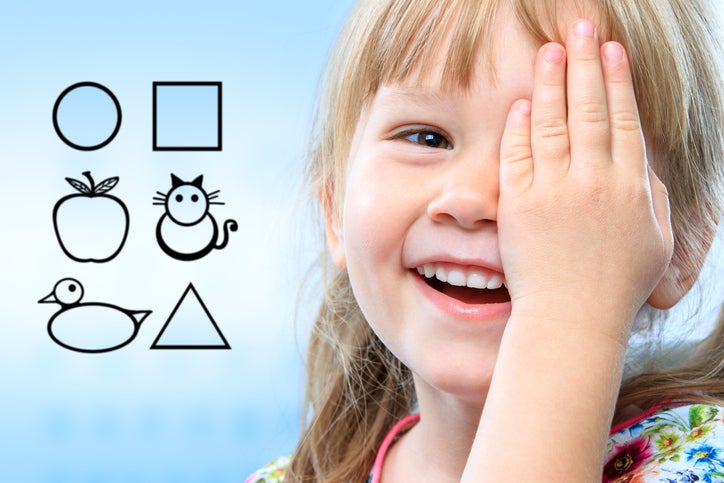Vision at Different Stages of Childhood
Hi,this is my second post and I thank all the viewers for the positive response on my first post.Hope you would enjoy reading this one too 😃So,this post focuses mainly on how a child's vision develops at different stages during childhood👀
The picture below wonderfully depicts stages of Childhood👦
| Photo credits: Google images |
As there is a progressive vision development at different stages,you can follow some tricks below which will help to stimulate and develop your child's vision as per the age.
1) New Born: Birth to 2 months of age
✅Expected Vision for the age:
In the first couple of months,your baby 👶is near-sighted and will be able to see objects close to face up to 8'' to 10'' from face.Also the quality of vision is poor.High-contrast,bold objects (Black and white,red and white stripes or pictures)can be their primary focus.
In the first couple of months,your baby 👶is near-sighted and will be able to see objects close to face up to 8'' to 10'' from face.Also the quality of vision is poor.High-contrast,bold objects (Black and white,red and white stripes or pictures)can be their primary focus.
Developmental Milestones :
Baby's brain is basically working on developing 'Form Sense'(Ex: identifying boundary of its mother's hairline or face) with the information received by viewing through both eyes
Baby's brain is basically working on developing 'Form Sense'(Ex: identifying boundary of its mother's hairline or face) with the information received by viewing through both eyes
 |
| Above image shows how a new born 👶is trying to see her mother, as focusing for near is its main area of interest |
 |
| Photo Credits: Google Images Attractive toys with music can be hanged on top of baby's cradle/crib to stimulate vision |
Tricks for Visual Play:
- To grab their attention, you may show them dark/bright colored toys.You can also hang it on top of your cradle/crib
- Parents can wear high contrast or bright colored clothes which can differentiate them from the background and grab attention
- Show toys with dim flashing lights(bright light source can be harmful).Avoid clicking pictures with flash light 'ON'
- Install a dim light in your baby's room
2) Infant: 2 months to 12 months of age
✅Expected Vision for the age:

The above image shows activities of a baby during infancy
Developmental Milestones :

- From around 5 months of age the baby's depth perception(three dimensional viewing)starts developing and they will be able to identify whether object is near or far.The eye-hand-foot co-ordination starts to improves
- At 4 to 6 months of age, they quickly locate, pick up objects and accurately direct them to their mouth
- Color perception also improves from 6 months of age
- Can also watch moving objects
Tricks for Visual play:
- Baby should be involved in crawling and let your baby explore objects on the floor
- Objects can be named while playing and can be moved in different directions while playing to observe the baby eyes tracking the them
3) Toddler: 12 to 24 months old
✅Expected Vision for the age:
By the age of 12 months and beyond, the child's vision reaches to a normal adult level and they continue to learn and understand what they see.As per an article written by American Academy of Ophthalmology, a child's ability to focus at an object or both eyes working together,continues to develop until the age of 7 years
Developmental Milestones :
Developmental Milestones :
 By this time, most babies try to explore their surroundings as their eye-hand coordination improves and their three- dimensional vision(perceiving depth) also improves.They try to stand and also try to recognize familiar objects and persons
By this time, most babies try to explore their surroundings as their eye-hand coordination improves and their three- dimensional vision(perceiving depth) also improves.They try to stand and also try to recognize familiar objects and persons
Tricks for visual play:
- As the child's ability to use muscles of hand and legs get better over time,activities such as building blocks,matching objects by same properties( shape/color),naming objects/pictures.
- Help to hold pencil or crayon and let them scribble on a paper/drawing board
4) Pre-School: 2 to 5 years of age
✅Expected Vision for the age:
As child advances to Pre-School,they fine tune their vision abilities gained during infancy and also try to rapidly learn new skills as they are introduced into a new environment with new set of children around.
As child advances to Pre-School,they fine tune their vision abilities gained during infancy and also try to rapidly learn new skills as they are introduced into a new environment with new set of children around.
- Your child will be able to recognize colors,shapes,recognizes own face in mirror,remember first few set of numbers and letters, and mainly try to focus normally without crossing both eyes.
- Parents mainly need to watch their child for the presence of vision problems like lazy eye or crossed eye/squinting eye as these conditions often develop at this age.(Also observe the child for developmental delays)
 |
| Photo credits: Google Images |
Tricks for Visual play:
- Eyes work individually as well as together, it is important to check whether your child is able to see with one eye at a time.
- It is not so easy for your child to cooperate,but you may try to close one of the eye, show his/her favorite toy and observe the other eye to see whether the child is fixing and following the moving toy
- If you suspect for any problem, you may consult you Pediatric Optometrist/Ophthalmologist.
5) Mid-Childhood: 6 to 11 years
- At this stage,parents should observe for any obvious eye problems such as squinting,squeezing eyes or reading at close distance,etc and consider getting an eye exam.
- Any child who is active verbally may easily read or identify the vision screening chart at the clinic.
- Your child's eye problem can be understood by you consulting Optometrist/Ophthalmologist and corrective options can be give
6) Adolescent : 12-18 years
- It is a transition phase to adulthood,where your children might complain about an eye problem when noticed.Yearly eye screening with an Optometrist/Ophthalmologist for all the children is important as discussed earlier in the previous post due to the present Digital world.
- It is not only important to pick up eye problems by your eye doctor but also changes in the refractive errors( glasses power) if your child is already wearing glasses can be monitored
 |
| Photo credits: Google Images Above image shows how your child sees from birth to adulthood |
Note: We should keep in mind that the overall pattern of vision development is same throughout childhood.But every child will have development in his/her own rate
As childhood is a phase where children may not be able to complain,it is important for every parent to have an idea regarding normal vision as per age.As we look for child's growth and developmental delays,vision development is also a necessary milestone at different stages of childhood.Hence,it has to be prioritized!
Thanks for the patience!! 😃Hope you find the content useful 👀
Stay tuned for an upcoming interesting article😊!!
REFERENCES:
Image credits: Shutterstock.com,google images
Articles:
https://www.aao.org/eye-health/tips-prevention/tips-children-eyes-vision
https://lasermom.wordpress.com/2012/06/24/infant-vision-research/
https://www.aao.org/eye-health/tips-prevention/tips-children-eyes-vision
https://lasermom.wordpress.com/2012/06/24/infant-vision-research/

3 comments:
Very helpful Rashmi , got to know the visual stages of humans at different age . Keep sharing .
Easy peasy and good initiative work during covid time and we will be waiting for more and more posts about the eyes and the precautions and prevention and management of any acute eye conditions ...best wishes
Thank you very much!!
Post a Comment